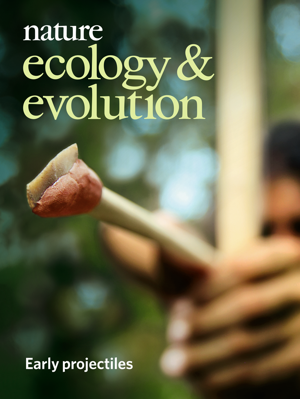Selection and gene flow shape niche-associated variation in pheromone response.
Nat Ecol Evol. 2019 Oct;3(10):1455-1463. doi: 10.1038/s41559-019-0982-3. Epub 2019 Sep 23.
Lee D1, Zdraljevic S1,2, Cook DE1,2,3, Frézal L4, Hsu JC5, Sterken MG6, Riksen JAG6, Wang J5, Kammenga JE6, Braendle C7, Félix MA4, Schroeder FC8, Andersen EC9.
Author information
1. Department of Molecular Biosciences, Northwestern University, Evanston, IL, USA.
2. Interdisciplinary Biological Sciences Program, Northwestern University, Evanston, IL, USA.
3. The Francis Crick Institute, London, UK.
4. Institut de Biologie de l’Ecole Normale Supérieure, CNRS, Inserm, École Normale Supérieure, Paris Sciences et Lettres, Paris, France.
5. Biodiversity Research Center, Academia Sinica, Taipei, Taiwan.
6. Laboratory of Nematology, Wageningen University and Research, Wageningen, The Netherlands.
7. Université Côte d’Azur, CNRS, Inserm, IBV, Nice, France.
8. Boyce Thompson Institute and Department of Chemistry and Chemical Biology, Cornell University, Ithaca, NY, USA.
9. Department of Molecular Biosciences, Northwestern University, Evanston, IL, USA. Erik.Andersen@Northwestern.edu.
Abstract
From quorum sensing in bacteria to pheromone signalling in social insects, chemical communication mediates interactions among individuals in local populations. In Caenorhabditis elegans, ascaroside pheromones can dictate local population density; high levels of pheromones inhibit the reproductive maturation of individuals. Little is known about how natural genetic diversity affects the pheromone responses of individuals from diverse habitats. Here, we show that a niche-associated variation in pheromone receptor genes contributes to natural differences in pheromone responses. We identified putative loss-of-function deletions that impair duplicated pheromone receptor genes (srg-36 and srg-37), which were previously shown to be lost in population-dense laboratory cultures. A common natural deletion in srg-37 arose recently from a single ancestral population that spread throughout the world; this deletion underlies reduced pheromone sensitivity across the global C. elegans population. We found that many local populations harbour individuals with a wild-type or a deletion allele of srg-37, suggesting that balancing selection has maintained the recent variation in this pheromone receptor gene. The two srg-37 genotypes are associated with niche diversity underlying boom-and-bust population dynamics. We hypothesize that human activities likely contributed to the gene flow and balancing selection of srg-37 variation through facilitating the migration of species and providing a favourable niche for the recently arisen srg-37 deletion.
PMID: 31548647
DOI: 10.1038/s41559-019-0982-3

